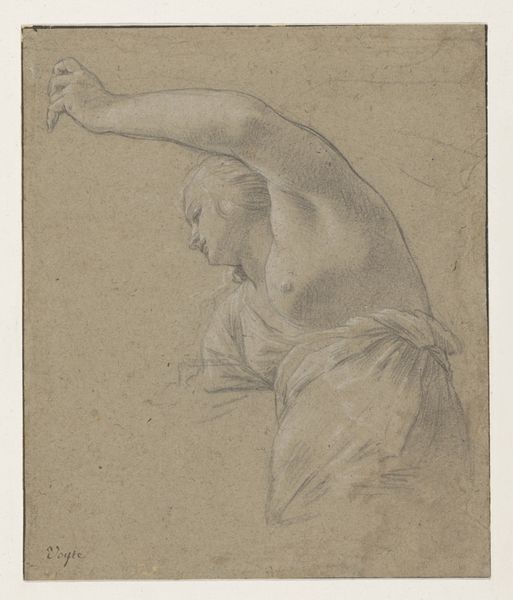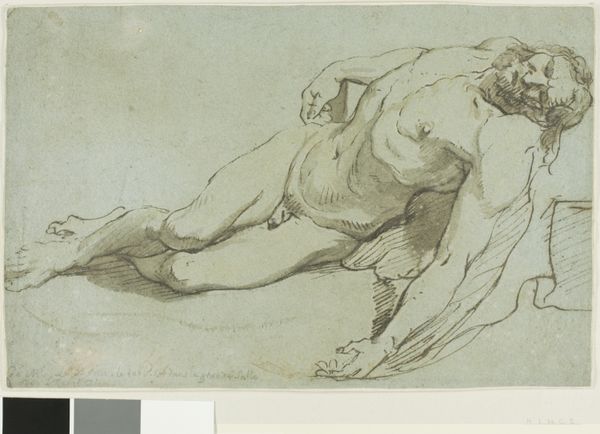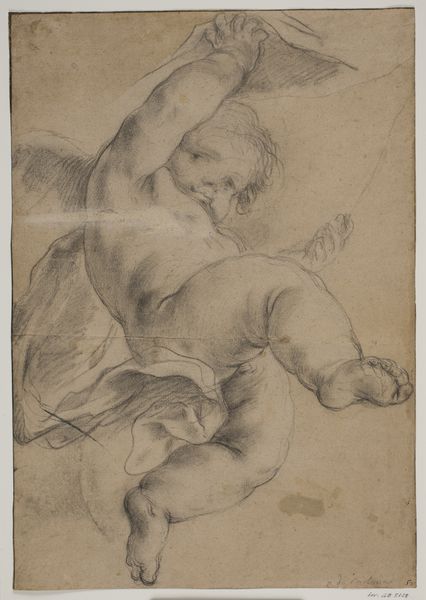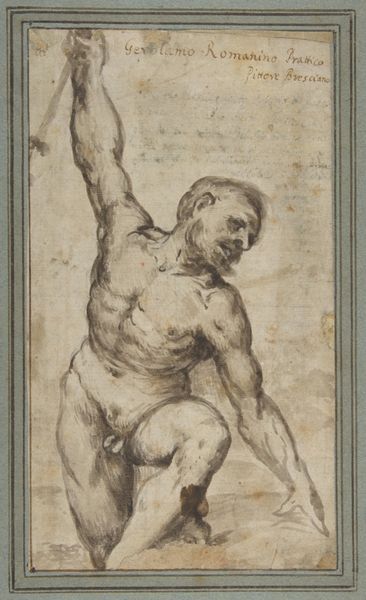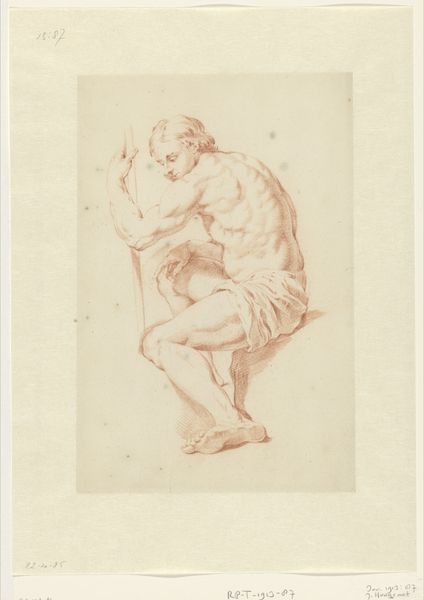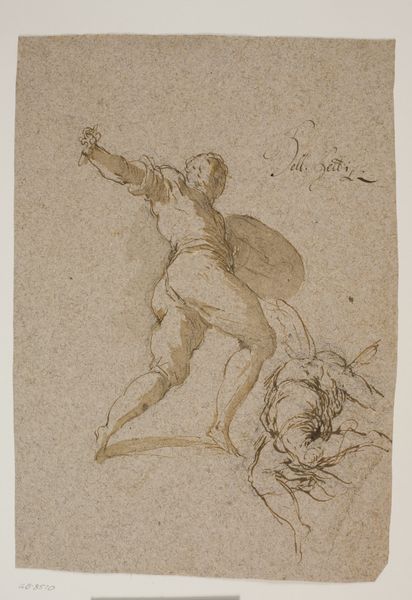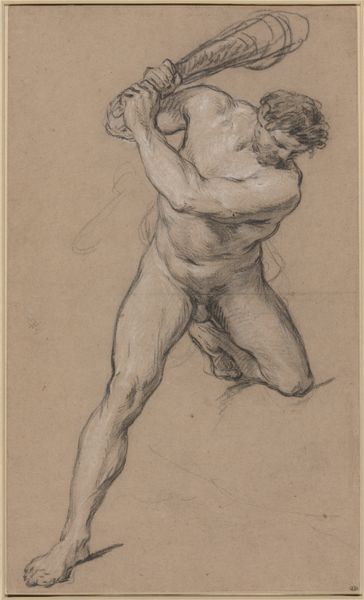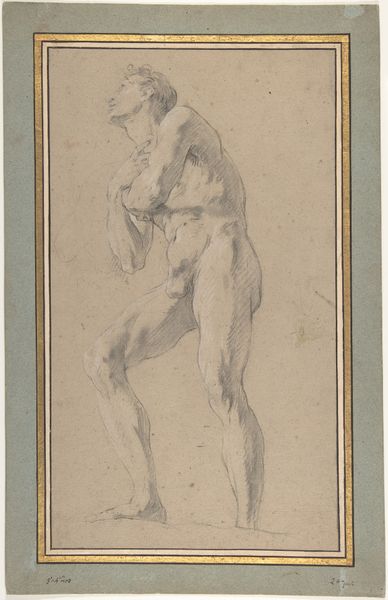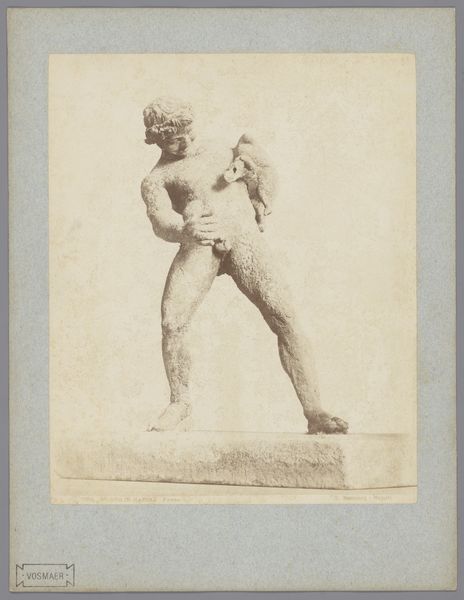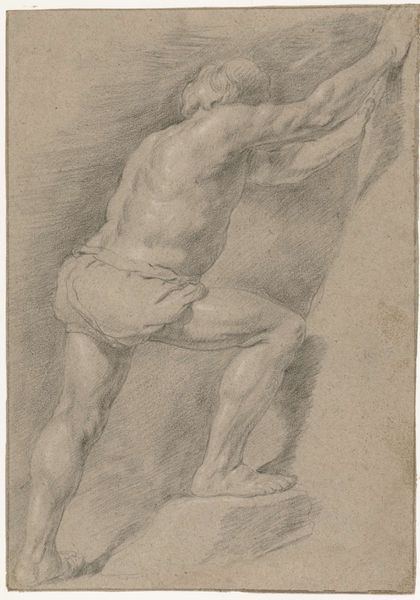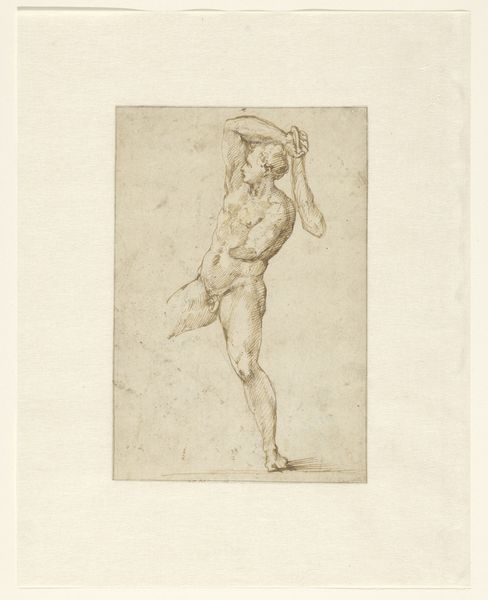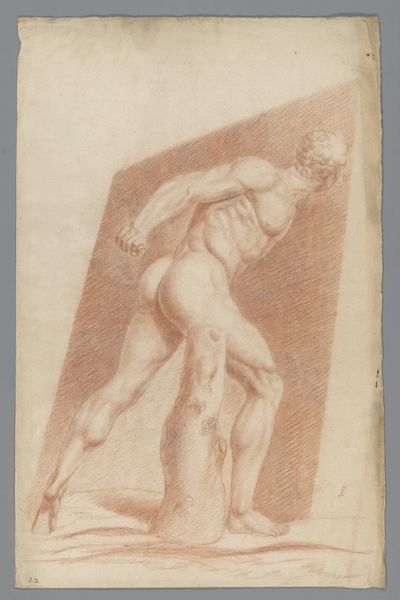
drawing, paper, ink, chalk
#
drawing
#
figuration
#
paper
#
ink
#
13_16th-century
#
chalk
#
academic-art
#
italian-renaissance
#
nude
Copyright: Public Domain
Editor: Here we have "Schwebende Amorette nach rechts", a drawing attributed to Annibale Carracci, ink and chalk on paper. The figure appears dynamic, though the lines seem quickly sketched. What draws your eye to this particular drawing? Curator: Immediately, the asymmetry commands attention. Note the deliberate imbalance. The cupid's weight shifts drastically, creating a diagonal tension. Consider the placement of the limbs, the implied movement… Does it not suggest a deeper structural significance? Editor: It does seem like the body is caught in mid-motion, although it also has a raw, unfinished look, wouldn’t you say? Curator: Precisely! The unfinished quality enhances its semiotic power, you could almost call it gestural, in spite of its classical form. This deliberate openness compels the viewer to engage with the artistic process itself, rather than merely observing a completed form. Notice also the tonal gradations created by the chalk – not for realism, but for depth and emphasis. It emphasizes the volume while simultaneously negating it, denying complete form in favour of process. What do you make of that ambiguity? Editor: So, rather than focusing on the cherub's story or symbolic meaning, we look at how the drawing itself communicates a sense of movement and form, through lines, shading, and maybe what's even left unfinished? Curator: Yes, our goal is not to simply decode what's represented, but how that representation takes place through form. Only then can we understand the artistic intention and its implications for interpretation. The act of creation, not the created subject. Editor: That’s given me a completely new perspective! Thank you. Curator: You're welcome. It's rewarding to consider the dynamic relationship between form and meaning, don’t you agree?
Comments
No comments
Be the first to comment and join the conversation on the ultimate creative platform.
